The Style Writer was a great printer. I used it in university and it was far more reliable than modern printers.
In the early to mid-1990s, Apple released a wide range of quirky and unique products, ranging from printers and digital cameras to a video game console and a PDA with a keyboard. Steve Jobs nixed the vast majority of these products upon his return to Apple in 1997, helping the company to regain its focus and avoid impending bankruptcy.
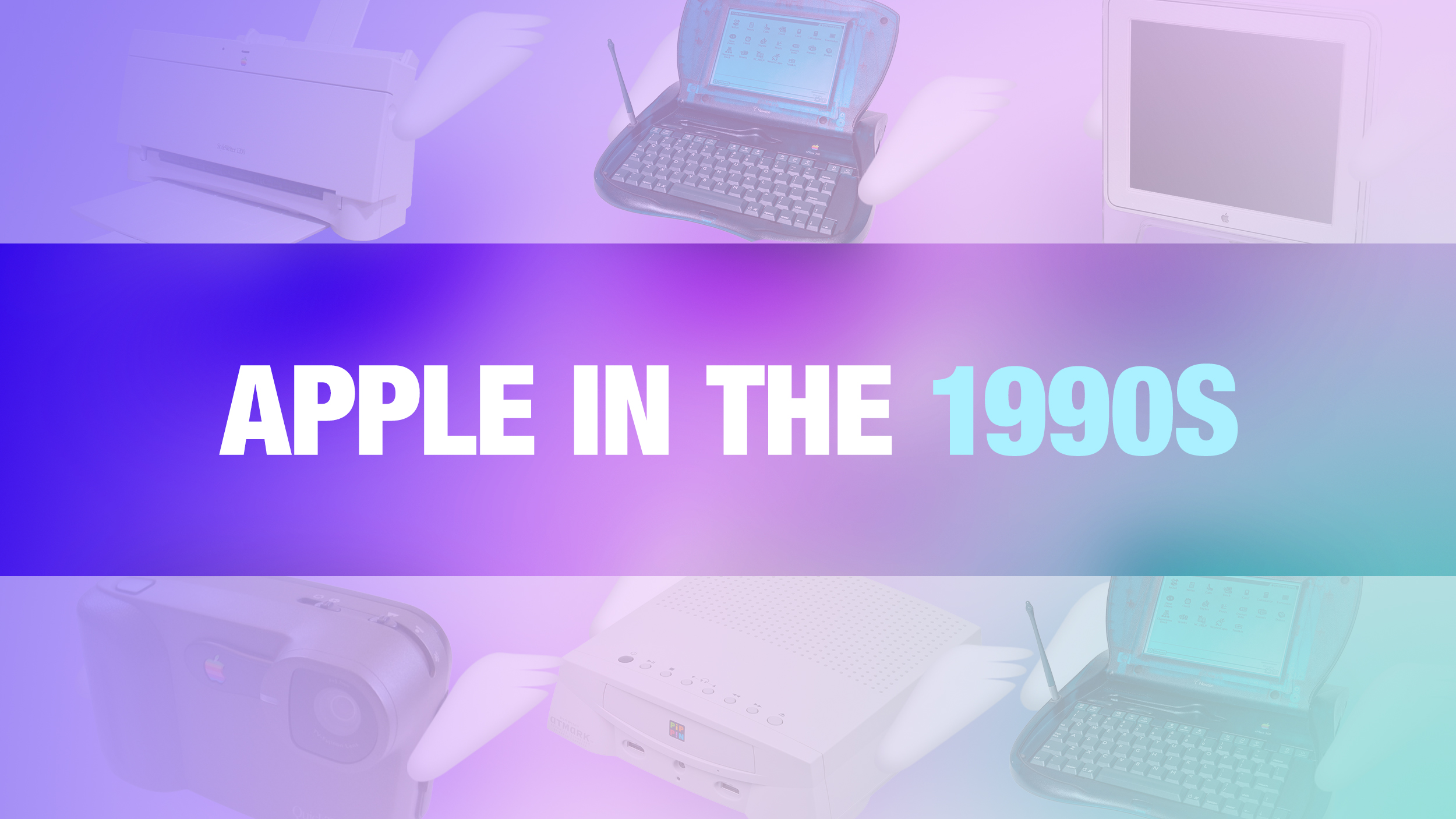
Many longtime MacRumors readers are likely already well informed about Apple's peculiar 1990s era, but for those who started following the company in the 2000s, it can be fascinating to look back at the products released in the older days.
Below, we reflect on five unique Apple products from the 1990s, including the QuickTake, Newton eMate 300, Studio Display, StyleWriter, and Pippin. There are of course many others, ranging from the Twentieth Anniversary Macintosh to the Newton MessagePad, but we tried to make some selections that are perhaps a bit more obscure today.
Newton eMate 300
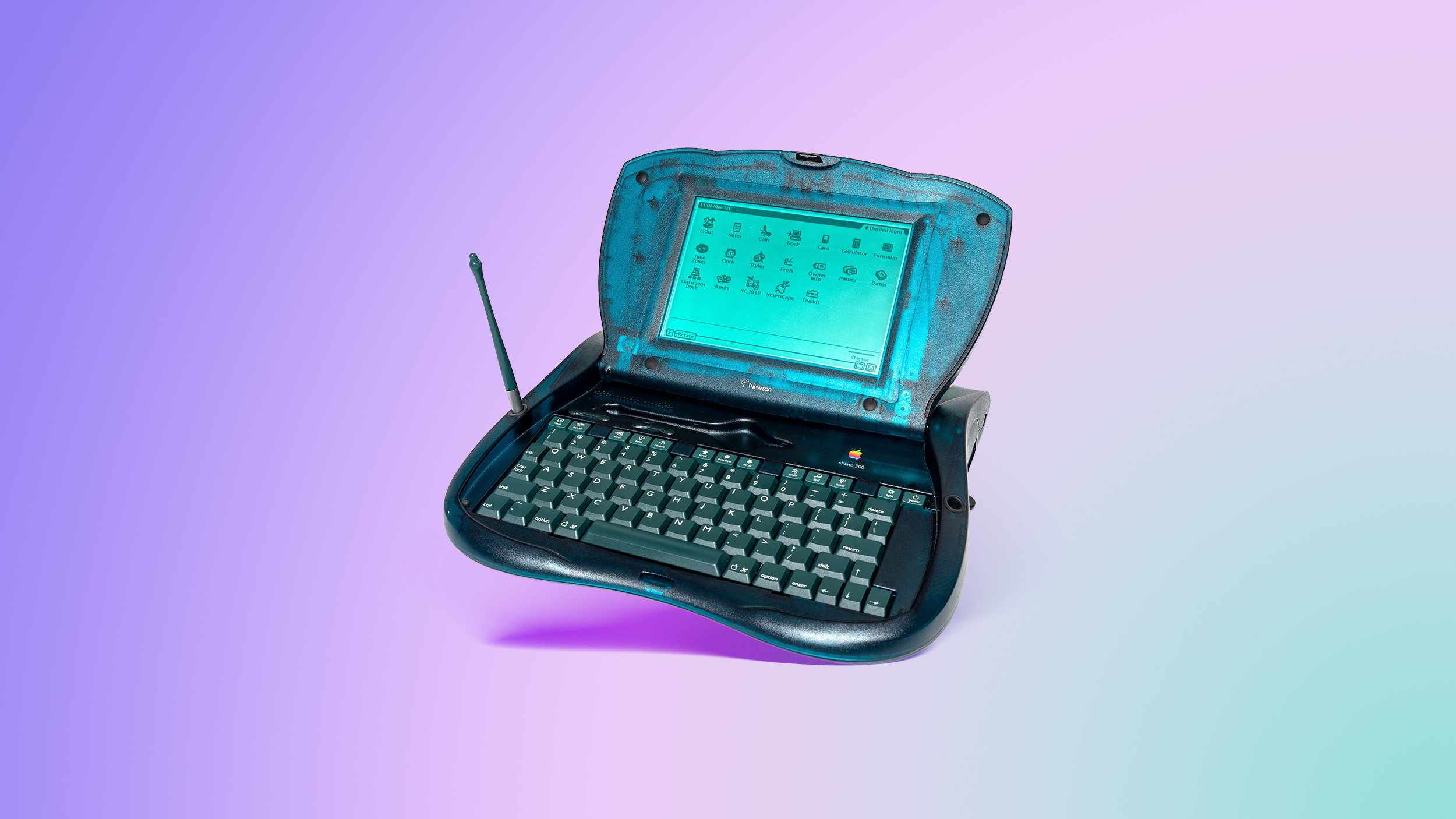
In 1993, Apple released the Newton MessagePad, a personal digital assistant (PDA) that was sort of like a very early and rudimentary version of the modern smartphone. Equipped with a black-and-white, pressure-sensitive touch screen, and a stylus, the device offered basic calendar, contact, note-taking, to-do list, and email functionality.
Apple went on to release a line of Newton products, including the eMate 300 in 1996, an entry-level computer for children to use in the classroom. It was the only Newton device with a built-in keyboard, and it featured a colorful and durable plastic casing that could withstand the perils of the classroom. It looks a little bit like the iBook that Apple released a few years later, but it ran the Newton operating system instead of Mac OS.
Priced at around $800, the eMate 300 was equipped with a 6.8-inch black-and-white, pressure-sensitive touch screen with a resolution of 480×320 pixels. Other specs included a 25 MHz ARM processor and a whopping 3 MB of RAM.
Jobs discontinued the entire Newton line upon his return in 1997.
QuickTake
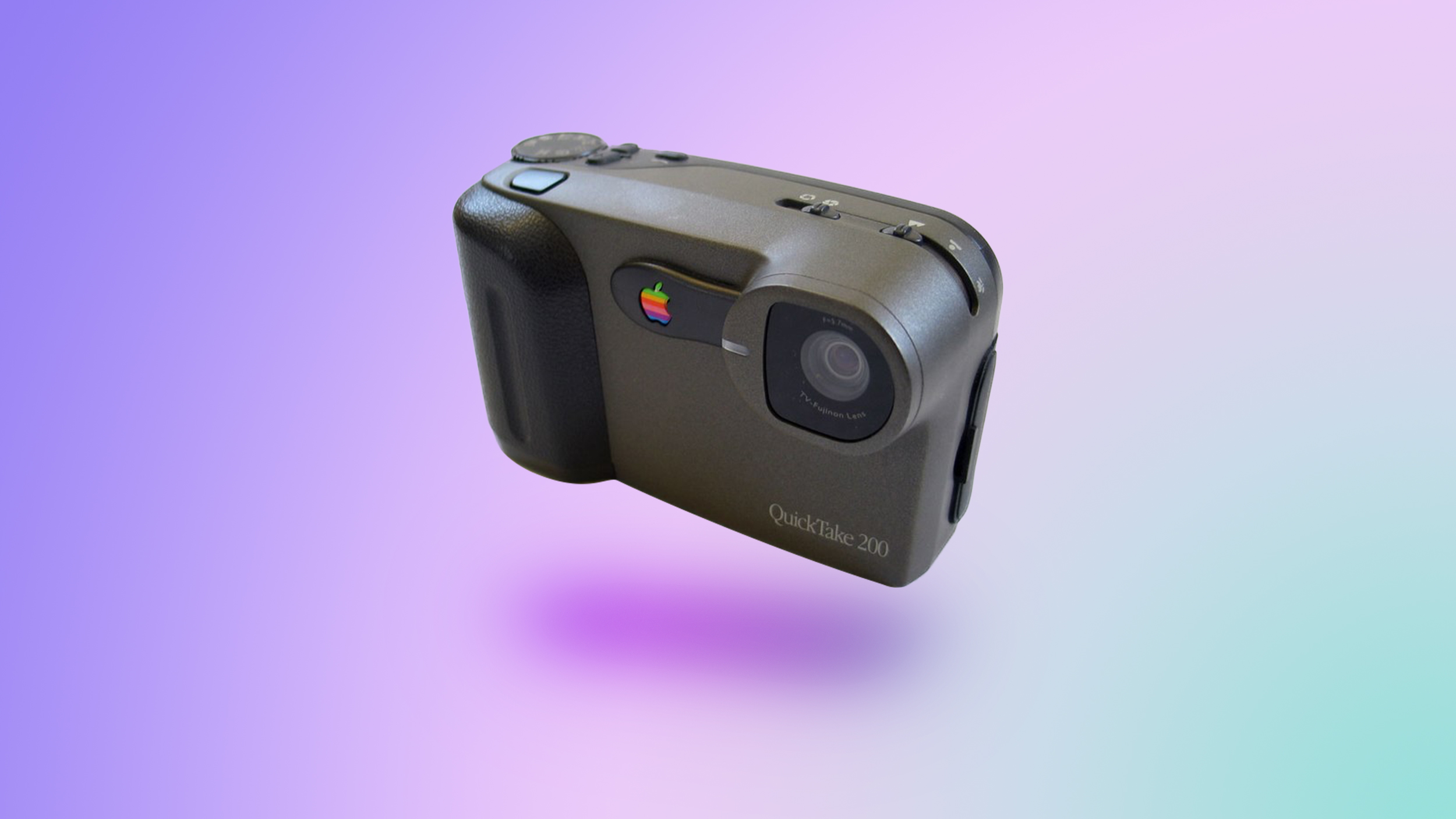
In 1994, Apple released the QuickTake, one of the first consumer-oriented digital cameras ever. Apple designed the original QuickTake 100 model in partnership with Kodak. With 1MB of built-in storage, the camera could store up to a whopping eight photos with a resolution of 640×480 pixels. The camera had a built-in flash, but it did not offer manual focus or zoom controls. And while it featured a small LCD screen for basic information like battery level, it did not provide a live preview of the viewfinder's image.
Apple went on to release two more QuickTake 150 and QuickTake 200 models, with the latter made in partnership with Fujifilm. Some of the QuickTake 200's key upgrades included support for higher-resolution photos up to 1024×768 pixels, a 1.8-inch LCD screen with a viewfinder preview, and a removable 2MB storage card.
At the time the QuickTake was released, it was still common for people to have photos printed at a store, so the ability to transfer digital photos to a Mac or PC was quite novel, but Apple faced lots of competition from the likes of Canon, Nikon, and Sony, and it was ultimately a lower-selling product that did not survive the Jobs chopping block.
Pippin
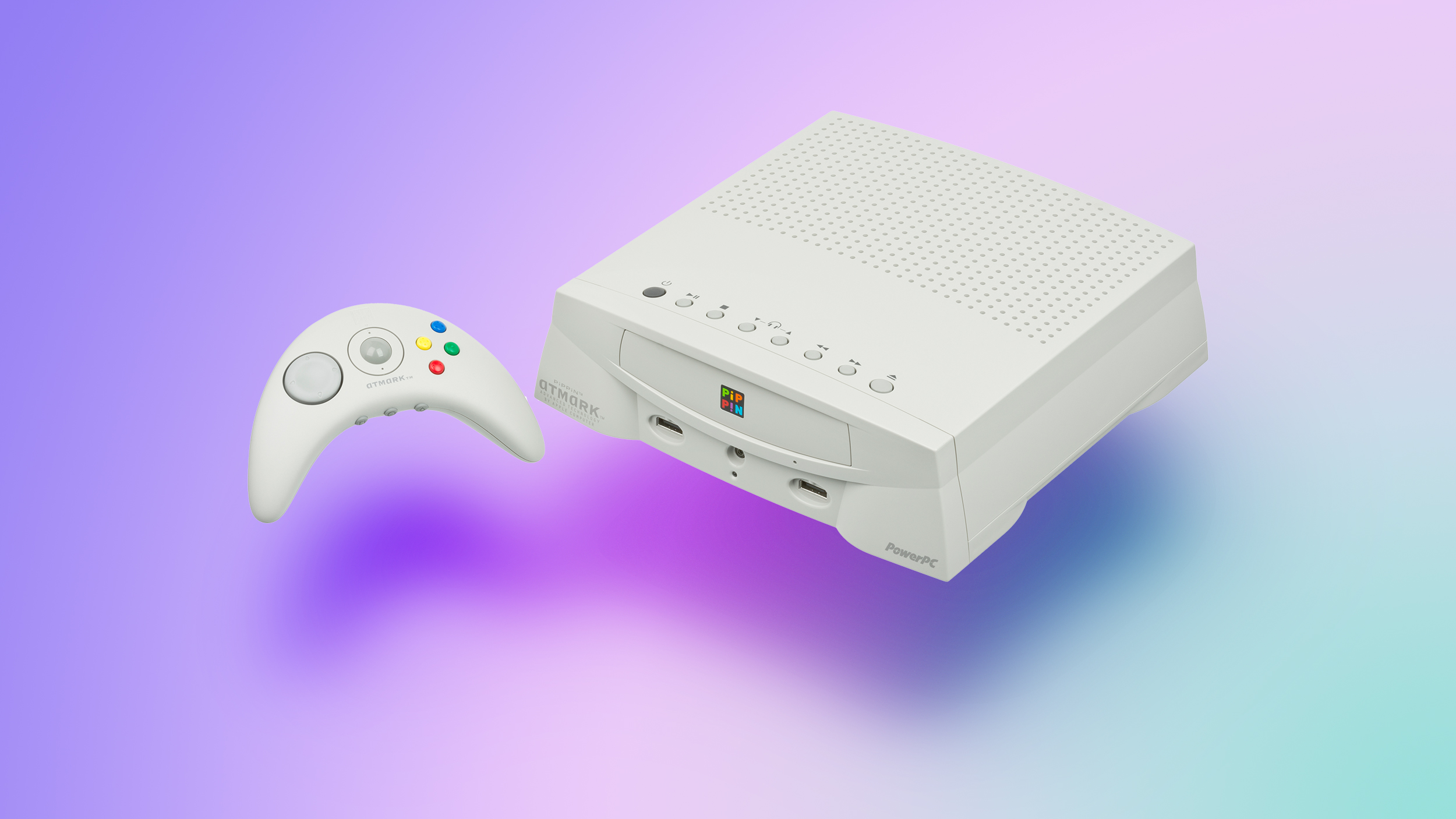
Believe it or not, Apple once made a video game console.
Apple teamed up with Bandai to release the Pippin, or PiPP!N, in 1996. Priced at $599, the PowerPC-based console was intended to be somewhat of a hybrid of a computer and a video game console, with its software based on the Macintosh System 7.5.2. Games were loaded into the built-in CD-ROM drive, but the selection was limited.
Ultimately, the PiPP!N was a flop, as both Sony's PlayStation ($299) and the Nintendo 64 ($199) were less expensive and offered a wider library of games.
Another casualty of Jobs' return, the PiPP!N was discontinued by 1998.
Studio Display
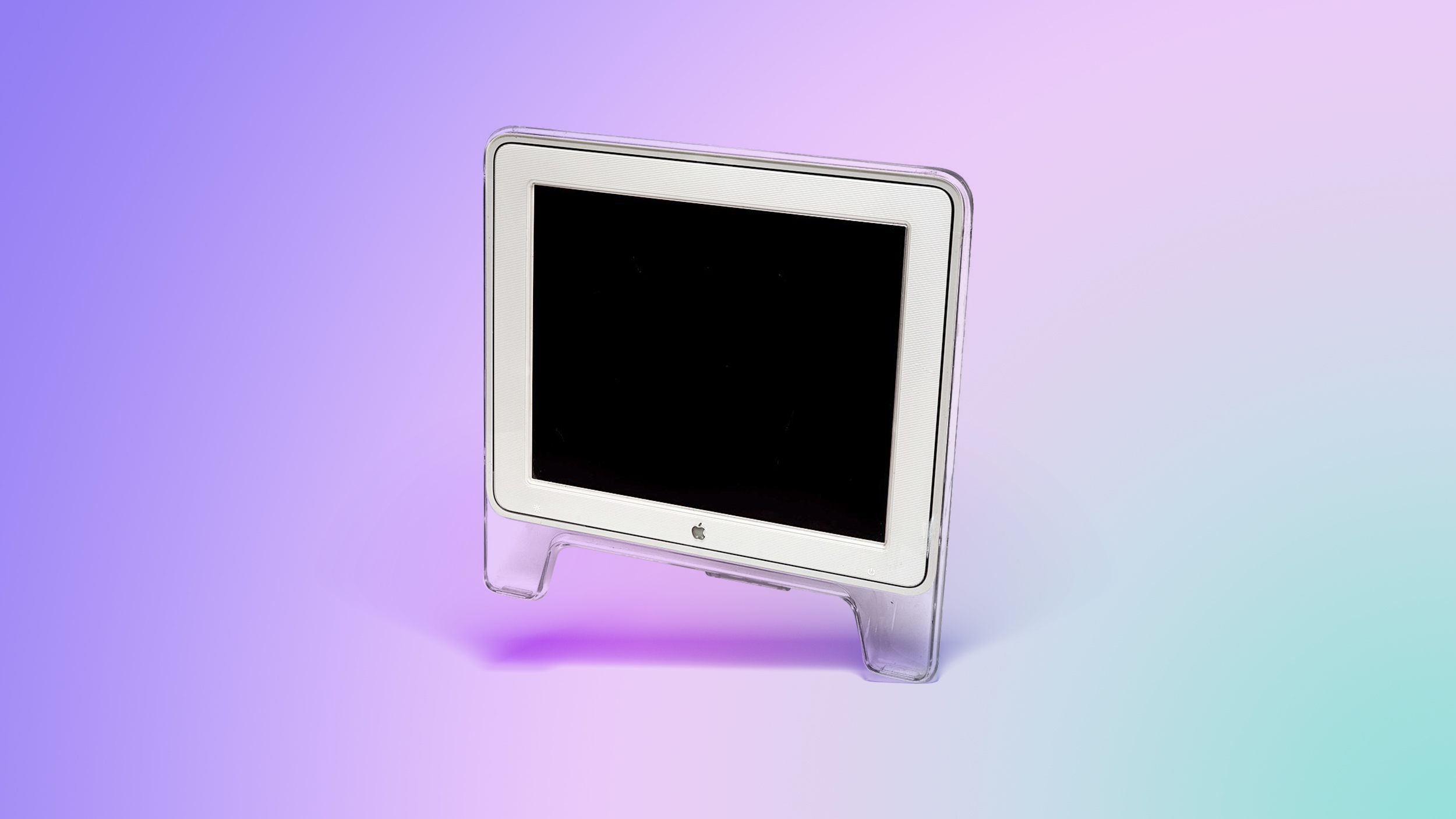
Studio Display from the early 2000s
You might be thinking that Apple just released the Studio Display three years ago, but it first used that name for an external monitor released back in 1998.
The original Studio Display featured a sleek design, with a 15-inch flat-panel LCD screen and a 4:3 aspect ratio. It had a resolution of 1024×768 pixels, a far cry from the current model's resolution of 5120×2880 pixels. It was priced at $1,999.
This is actually a product that Apple released shortly after Jobs returned to Apple, and the line remained available until 2004, when Apple fully shifted to its widescreen Cinema Display. In 2011, Apple moved on to the Thunderbolt Display, which was discontinued in 2016, before releasing the Pro Display XDR in 2019 and the current Studio Display in 2022.
Apple also released a bulkier CRT version of the Studio Display in 1999.
StyleWriter

Printers are another device category that Jobs put the kibosh on when he returned to Apple. Before then, though, Apple had released a variety of printer models, including the ImageWriter in 1982, the LaserWriter in 1985, and finally the StyleWriter in 1991.
The original StyleWriter was Apple's first inkjet printer with liquid ink, whereas the ImageWriter was a dot-matrix printer and the LaserWriter was a laser printer.
In the 2000s to early 2010s, Apple offered a rebate on third-party printers from brands like HP, Canon, Epson, and Lexmark with the purchase of a new Mac, but it has been nearly 30 years since an Apple-branded printer was last on the market.
Article Link: Apple Released These Oddly Unique Products in the 1990s
Got a tip for us?
Let us know
Become a MacRumors Supporter for $50/year with no ads, ability to filter front page stories, and private forums.
Apple Released These Oddly Unique Products in the 1990s
- Thread starter MacRumors
- Start date
- Sort by reaction score
You are using an out of date browser. It may not display this or other websites correctly.
You should upgrade or use an alternative browser.
You should upgrade or use an alternative browser.
Oh yes, the StyleWriter! Great printer for the day. Had that for years with the LC575. OK printer but was B&W. Printing on a more modern Colour HP printer via a PC looked terrible though compared to the Mac LC575 with System 7.6 and StyleWriter. The Mac truly was undisputed.
Streaks in prints were normal back then and I don't miss them one bit. Thanks to modern Canon Pro inkjets, I live a streak free print life now and in full colour.
Streaks in prints were normal back then and I don't miss them one bit. Thanks to modern Canon Pro inkjets, I live a streak free print life now and in full colour.
What this shows is that Apple has been before where they are now (forays into product/service categories some of us tend to label as not being Apple’s core business). We shouldn’t be quick to condemn what WE don’t want them to get into; after all, the beloved iPhone was a result of one of many such experiments.
Apple only got "popular" after the iPod.I never got to see any of this as no one I knew was using Apple products in the 90s. I got my first real computer in 1994, but it was a Windows PC.
Surprisedly, I remember someone using this exact style studio display in college, but connected to a PC, around 2000 or so. Not sure how they did that.
I remember all of them and have personally used all except the Pippin and that particular type of Newton (I had the one without a keyboard, it was great!).
I think the first Airport Base Station falls into this category…
Released in 1999. The first consumer oriented wireless networking option. Contained both ethernet and a 56K modem. (Yes, wi-fi users could share the 56K connection). And, it looked like a gray UFO.
Released in 1999. The first consumer oriented wireless networking option. Contained both ethernet and a 56K modem. (Yes, wi-fi users could share the 56K connection). And, it looked like a gray UFO.
I loved the designs of Apple in the late 1990s and early 2000s
While I had used Macs previously, the Bondi Blue iMac was what started me down the journey using this full time.

While I had used Macs previously, the Bondi Blue iMac was what started me down the journey using this full time.
It is fairly iconic.😀👍I loved the designs of Apple in the late 1990s and early 2000s
While I had used Macs previously, the Bondi Blue iMac was what started me down the journey using this full time.
View attachment 2528156
Omg this takes me back…my friend had an Apple IIGS “Woz Edition” and the ImageWriter II color printer. I was so jealous!😁The StyleWriter is a 90’s product but since the ImageWriter was mentioned I had to bring up the ImageWriter II.
When paired with the IIGS and a color ribbon, this thing made some pretty awesome picture printouts for 1986. I suppose it qualifies as it was in production until 1996.
I had both. Along with the 1200bps Apple modem that hung on the wall. Back in the day I thought this thing was the shiz until I got a Courier HST 14.4View attachment 2528064
Can we talk about the 2000 Studio Display CRT which to this day is the sexist piece of hardware I've ever seen

That side view was something I admit. Not quite as pretty head-on though (aside from the “floating” appearance) and frustratingly small display in use.
I loved mine at the time (as per pic here) but it was bulky so I didn’t hesitate to upgrade to the clear 23” flat LCD Cinema Display to pair with my G4 Cube (both of which I still have).
This was peak Apple design in every sense, still not surpassed IMO.
Also around this time, there was also the previous model opaque iMac-like CRT monitor variant too (in G3 B&W) which looked ugly AF in comparison to the clear G4 CRT.
And of course the flat panel LCD Studio Displays, in either Pismo smoke or G3 B&W.
Last edited:
Initially, the Power Macintosh G3 was available in a classic beige minitower, (horizontal/under monitor) desktop, or all-in-one system.
I had a horizontal one at work and later Performa as my first Mac at home after an Apple ][ and ][gs. The ][gs was a great machine, with a color Finder before the Mac.
Behold: The Apple Watch!
Yea, Apple sold a number of watches back then, as well as an Apple wall clock. I recently found my old wall clock, I may still have an old Apple Watch variant somewhere.
WOW! I forgot all about the QuickTake! I used that for the school newspaper and remember how excited I was to be super futuristic because I could put pictures right into the articles on Aldus Pagemaker instead of having a cut physical ones and stick them to blank spots for printing.
I saw the eMate mentioned recently on Reddit r/nostalgia, and I briefly had a thought of picking one up on eBay (they sell in the $200-300 range) and using it as my portable machine for doing some writing (typing). It's durable, the keyboard is nice, and it doesn't have all the distractions that a tablet or laptop has.
But then I realized two things: there's no decent word processing software for NewtonOS (I don't remember whether NewtonWorks was bundled or was a separate purchase), and - most importantly - there's no practical way to get data off a NewtonOS device any more. The eMate has serial and LocalTalk ports and infrared, but I don't think anything modern can communicate with them.
So, I'll stick with my iPad mini!
But then I realized two things: there's no decent word processing software for NewtonOS (I don't remember whether NewtonWorks was bundled or was a separate purchase), and - most importantly - there's no practical way to get data off a NewtonOS device any more. The eMate has serial and LocalTalk ports and infrared, but I don't think anything modern can communicate with them.
So, I'll stick with my iPad mini!
Former G4 cube owner, I loved it. I was so sad that design choices impacted and initial pricing impacted its popularity. I the argument could be made that the Studio is could be considered its spiritual successor to the G4 Cubewith my G4 Cube (both of which I still have).
Brilliant analogy! 🤣apple in the 90s is its psychedelic double album era with 20 minute guitar solos.
WOW! I forgot all about the QuickTake! I used that for the school newspaper and remember how excited I was to be super futuristic because I could put pictures right into the articles on Aldus Pagemaker instead of having a cut physical ones and stick them to blank spots for printing.
I had the first version (100) different from the one (150) shown in the article. It came with a black leather cover and small strap handle. It also had a separate lens you could snap on the front for close ups.
That's way back when Apple was making some different products, success or not, they tried. Other than the Apple Vision Pro, what's new in the last ten years? Upgrades yes, innovative products? Hardly.
The Apple Watch, AirPods, AirTags, Vision Pro, Mac Studio, and HomePod were all new products released in the last ten years.
Register on MacRumors! This sidebar will go away, and you'll see fewer ads.


